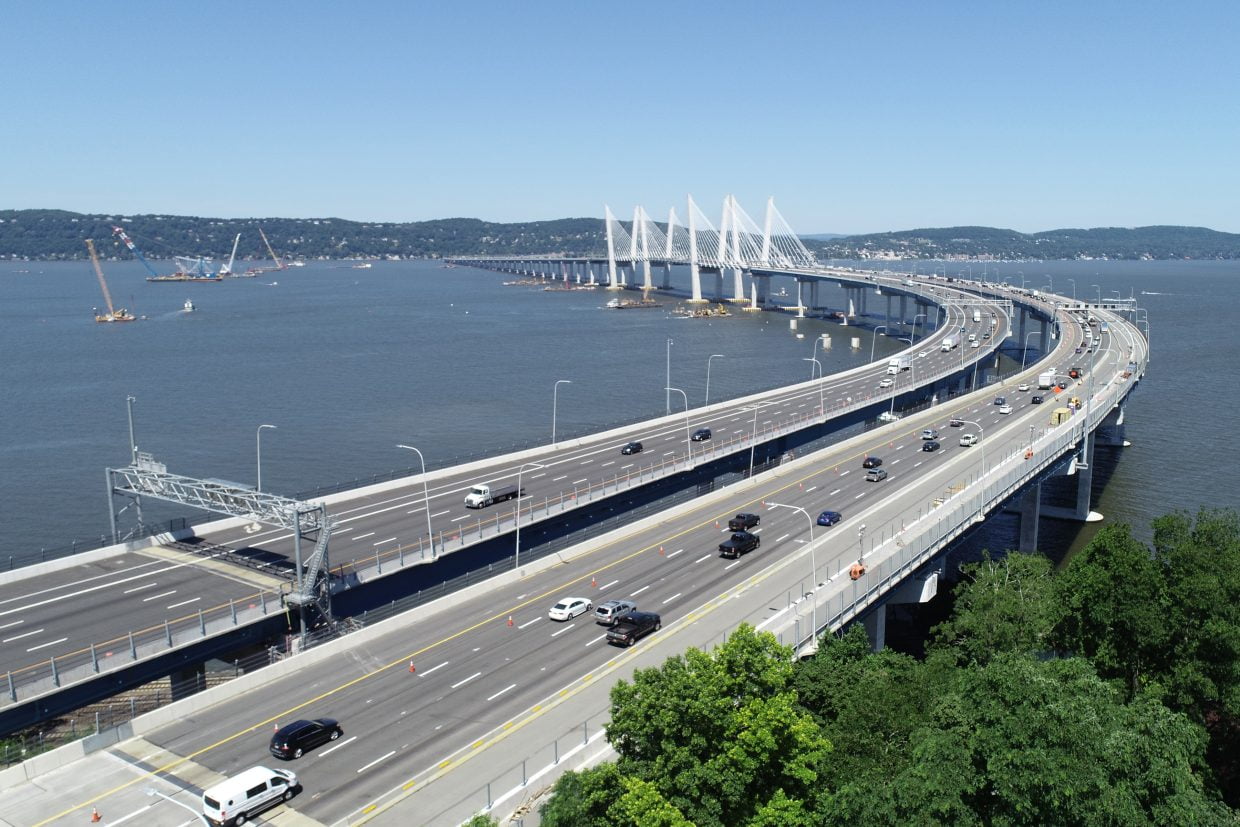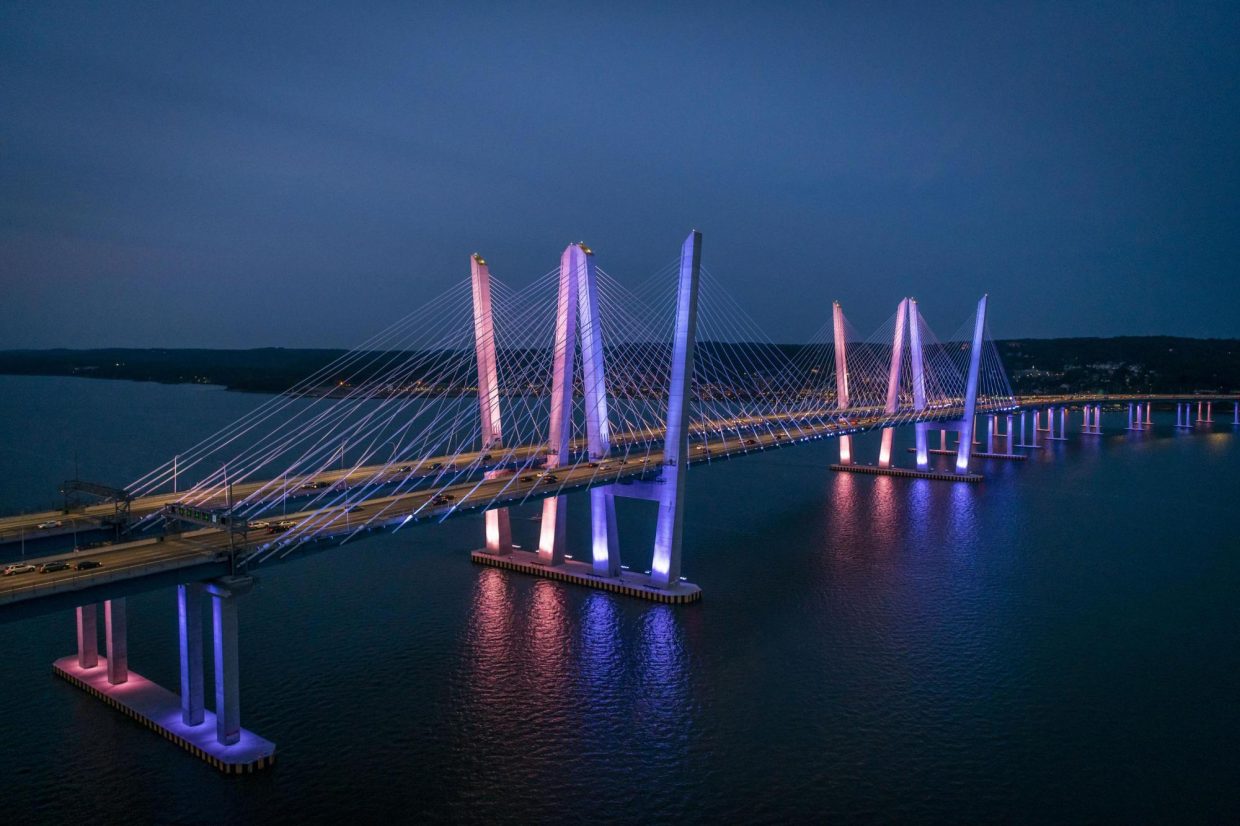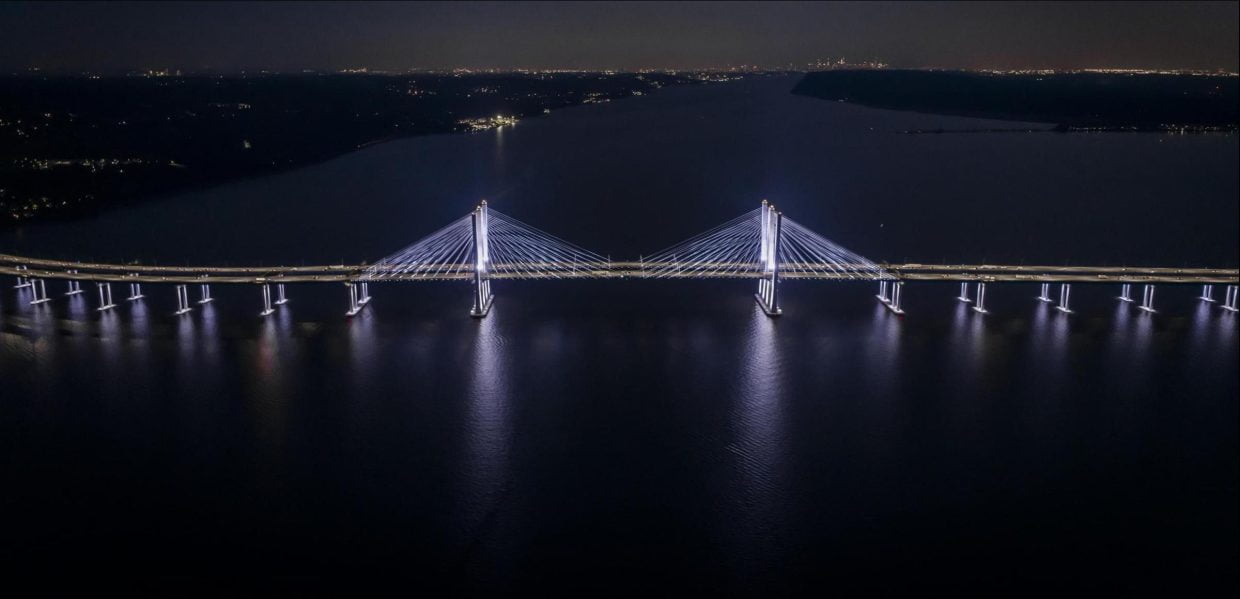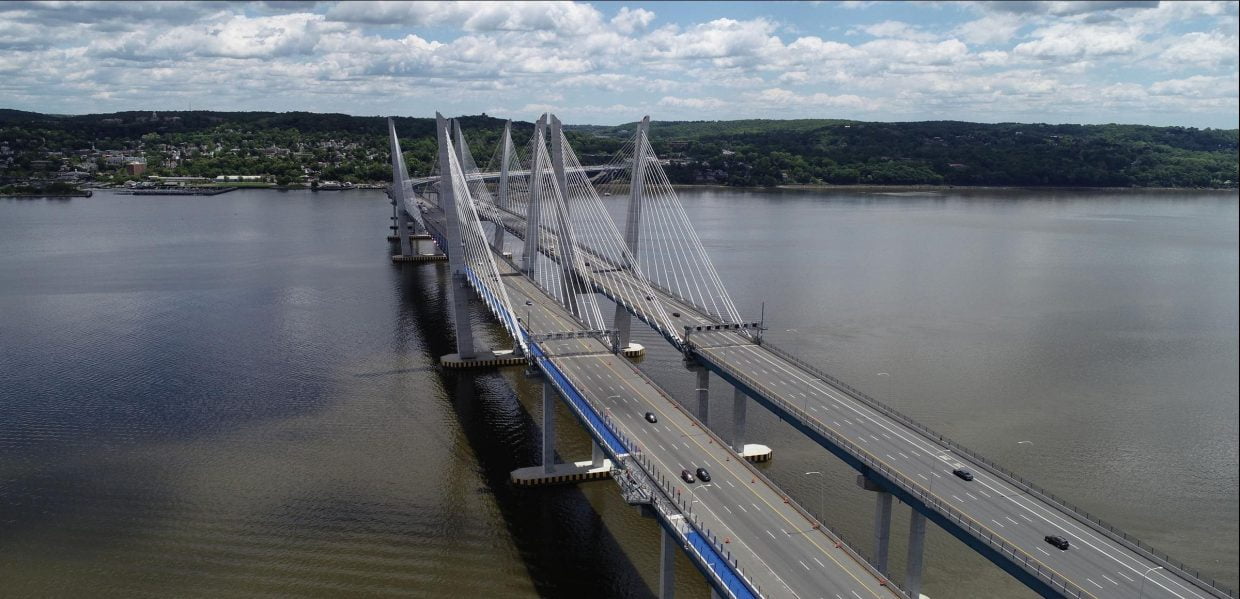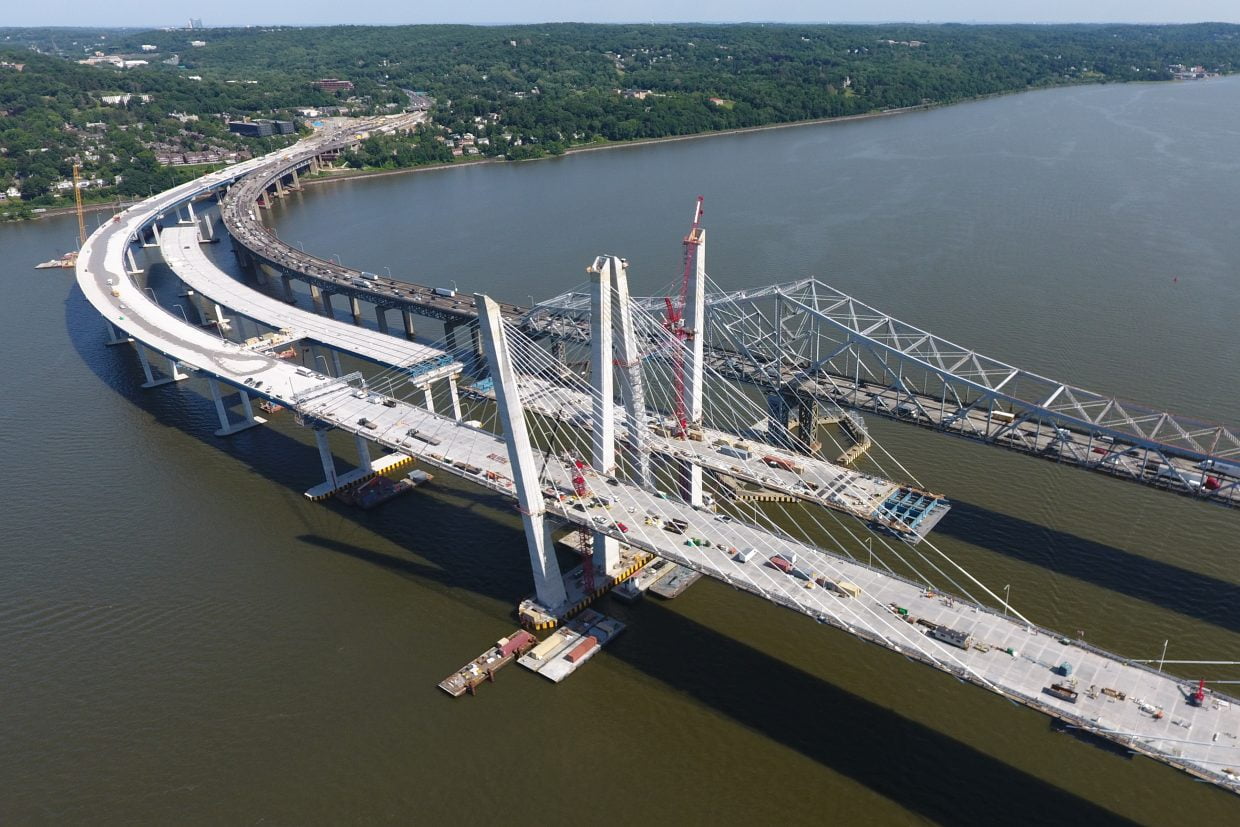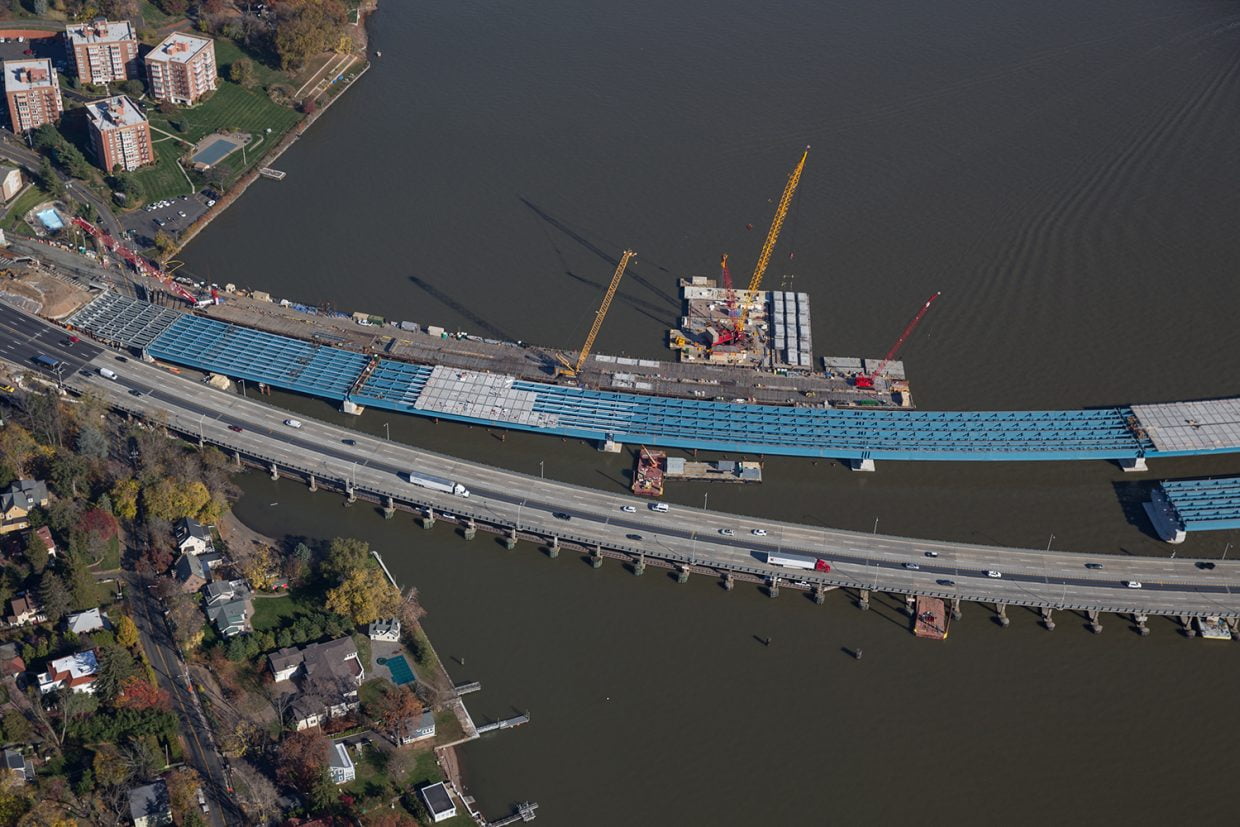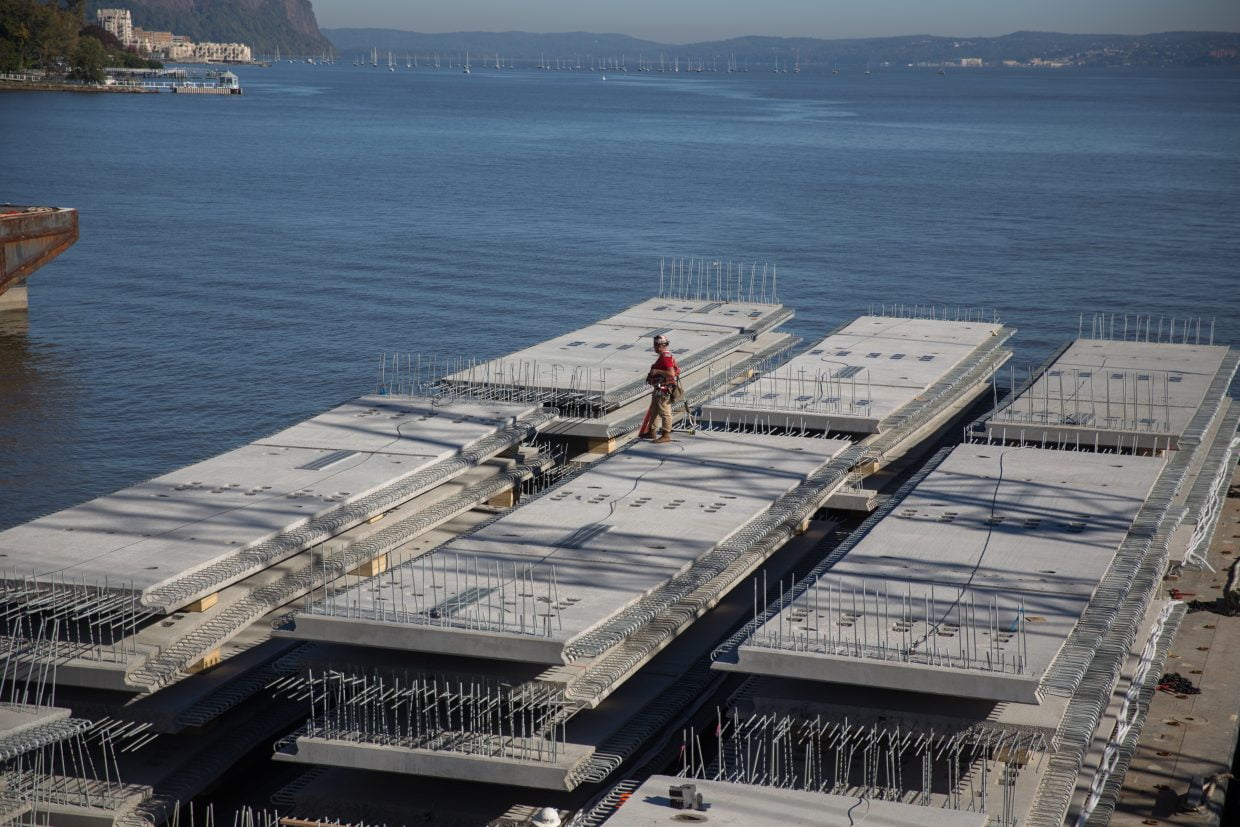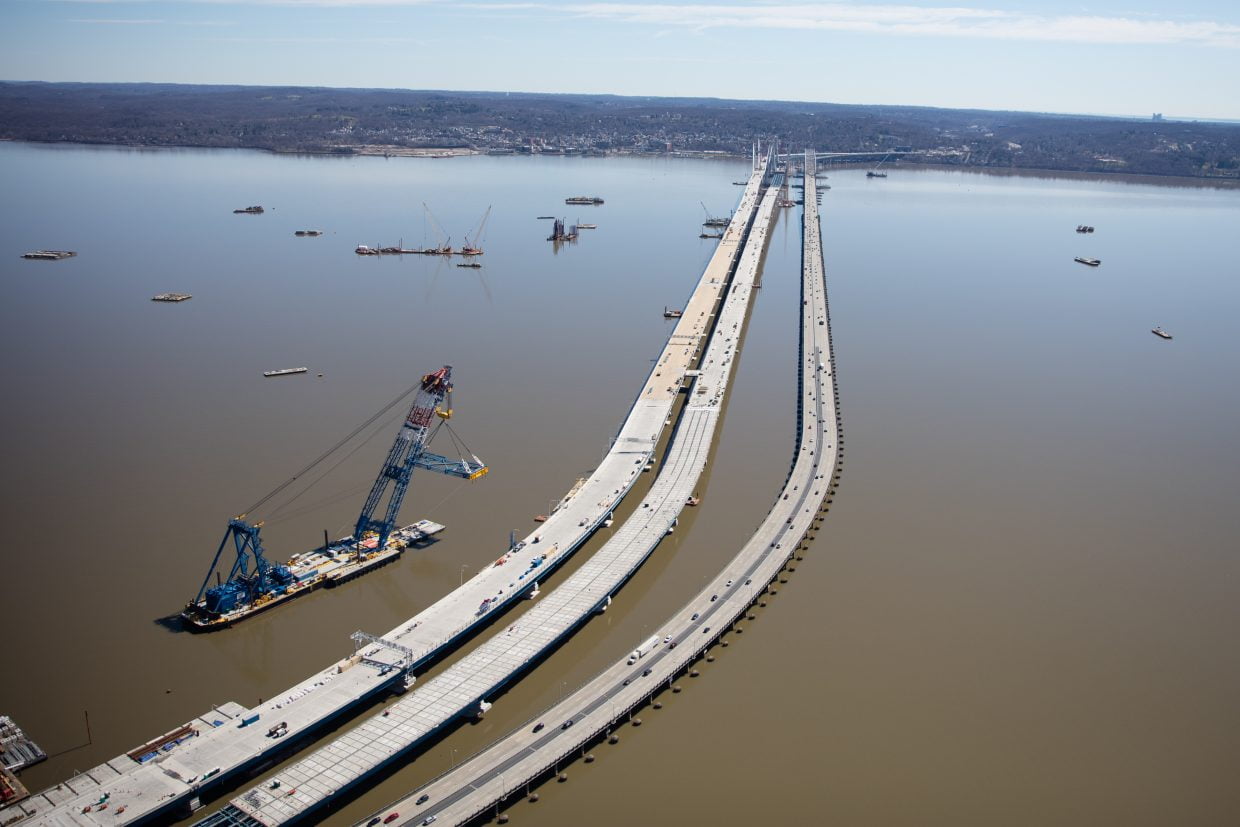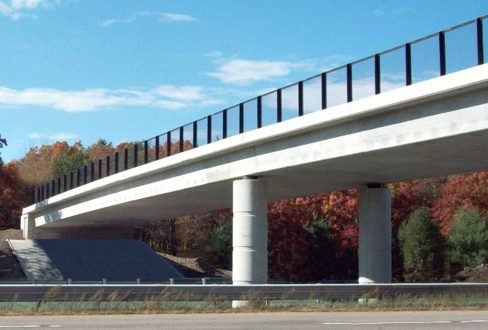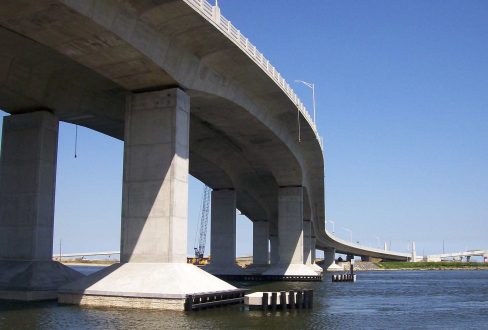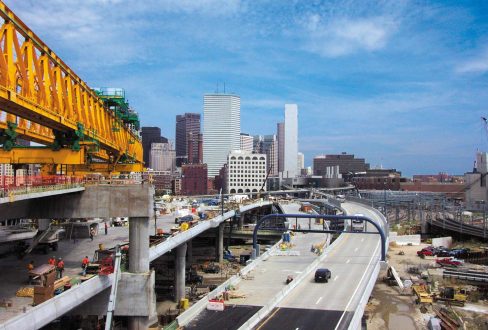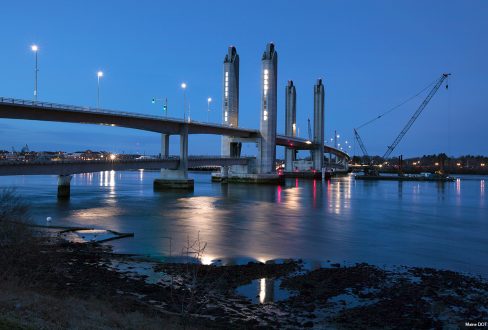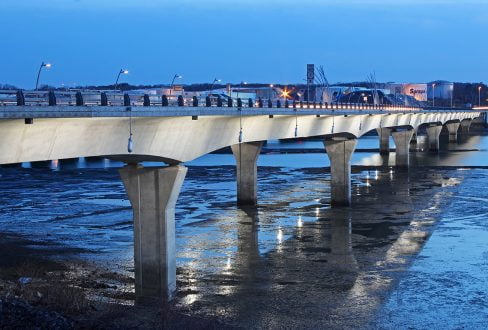The nearly $4 billion Tappan Zee Bridge project, officially named the Governor Mario M. Cuomo Bridge, was the largest construction project in the history of the New York State Thruway Authority and one of the largest bridge projects in the nation. Bridge construction was no small effort.
The bridge has been honored by the communities it serves by being recognized as a ‘Work of Art’ by the county art organization and council.
The project involved 6 linear miles of bridge composed of 85% approach viaducts and 15% cable-stayed structures. “The project used a vast amount of precast concrete materials, including pile caps, pier caps, road deck panels, and crossbeams between its eight iconic towers,” notes project director Jamey Barbas of the New York State Thruway Authority. Almost all of the piers and their foundations are waterborne, intensifying the difficulty of the work.
Rather than using sheet-pile cofferdams for pile caps, which would have been a labor-intensive method with an unacceptable environmental impact, the designers created a permanent precast concrete tub system as a form for the waterline pile caps. The tubs, which weighed an estimated 360 tons each, were shipped by barge to the project site and lifted into place over previously driven piles.
“This strategy yielded a huge benefit in terms of the schedule, reduced volume of in situ concrete placement, enhanced worker safety, and a reduction in the environmental risks otherwise associated with pile cap construction using cofferdams,” Barba says.
To manage the giant precast concrete elements, the project used one of the largest lifting cranes in the United States, and a 16-acre staging area at the Port of Coeymans in Albany County, N.Y. “The location of these staging yards alongside the Hudson River allowed the builder to readily barge the materials directly to the project site for installation with this large crane,” Barba explains. The project met all of its goals and has resulted in a signature structure that will serve more than 50 million travelers annually for decades to come.
Challenge
“The key challenge on the project was simply one of sheer size,” Barbas says. “The bridges cross over one of the widest points of the Hudson River, covering a distance of 3.1 miles.”
Solution
To expedite construction and limit the amount of fabrication/casting performed over water, innovative precasting techniques were developed to reduce on-site construction. Using precast concrete elements helped the designer tackle this challenge while keeping scalability in mind. “Applying the efficiencies of precasting was pivotal to delivering this mega-project,” said Barbas.

